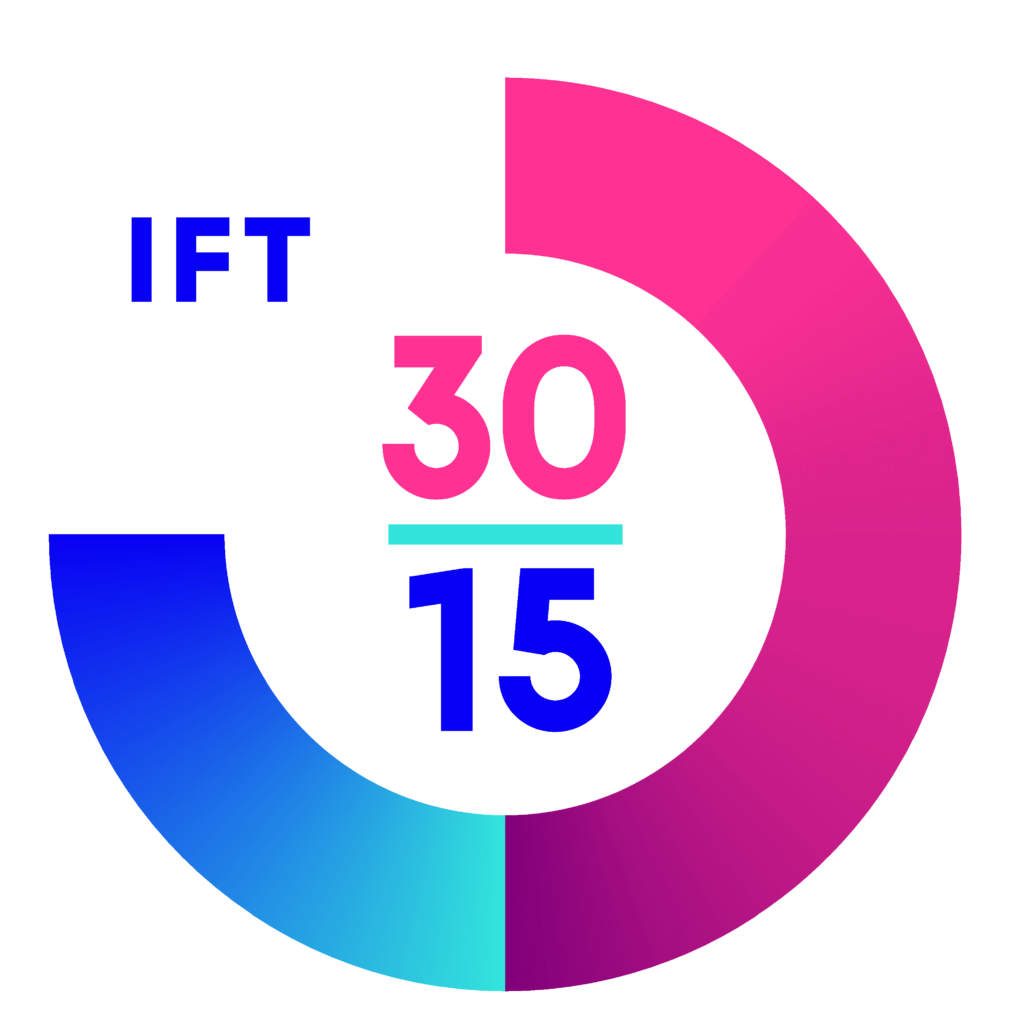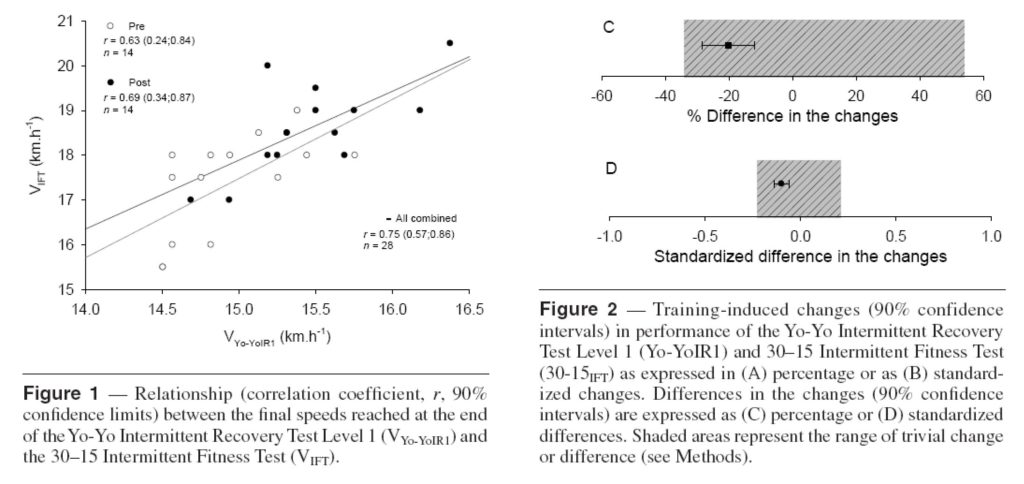The 30–15 Intermittent Fitness Test Versus the Yo-Yo Intermittent Recovery Test Level 1: Relationship and Sensitivity to Training
Buchheit M. & Rabbani A., IJSPP 9(3), 2013
Full text here

The aim of the present study was to a) examine the relationship between performance of the Yo-Yo Intermittent Recovery Test Level 1 (Yo-YoIR1) and the 30-15 Intermittent Fitness Test (30-15IFT) and b) compare the sensitivity of both tests to training. Fourteen young soccer players performed both tests before and after an eight-week training intervention, which included six sessions/week: two resistance training sessions, two high-intensity interval training sessions after technical training (four sets of 3:30 min of generic running and small sided games (4v4) during the first and second four-week periods, respectively, [90-95% maximal HR], interspersed with 3 min at 60-70% maximal HR) and two tactical-only training sessions. There was a large correlation between 30-15IFT and Yo-YoIR1 (r = 0.75, 90% confidence limits, CL 0.57;0.86). While within-test % changes suggested a greater sensitivity to training for the Yo-YoIR1 (+35%, 90%CL 24;45) compared with the 30-15IFT (+7%; 4;10), these changes were similarly rated as ‘almost certain’ (with chances for greater/similar/lower values after training of 100/0/0 for both tests) and moderate, i.e., standardized difference, ES = +1.2 90%CL (0.9;1.5) for Yo-YoIR1 and ES = +1.1 (0.7;1.5) for 30-15IFT. The difference in the change between both tests was clearly trivial (0/100/0, ES = -0.1, 90%CL -0.1;-0.1). Both tests might evaluate slightly different physical capacities, but their sensitivity to training is almost certainly similar. These results also highlight the importance of using standardized differences instead of % changes in performance to assess the actual training effect of an intervention.



